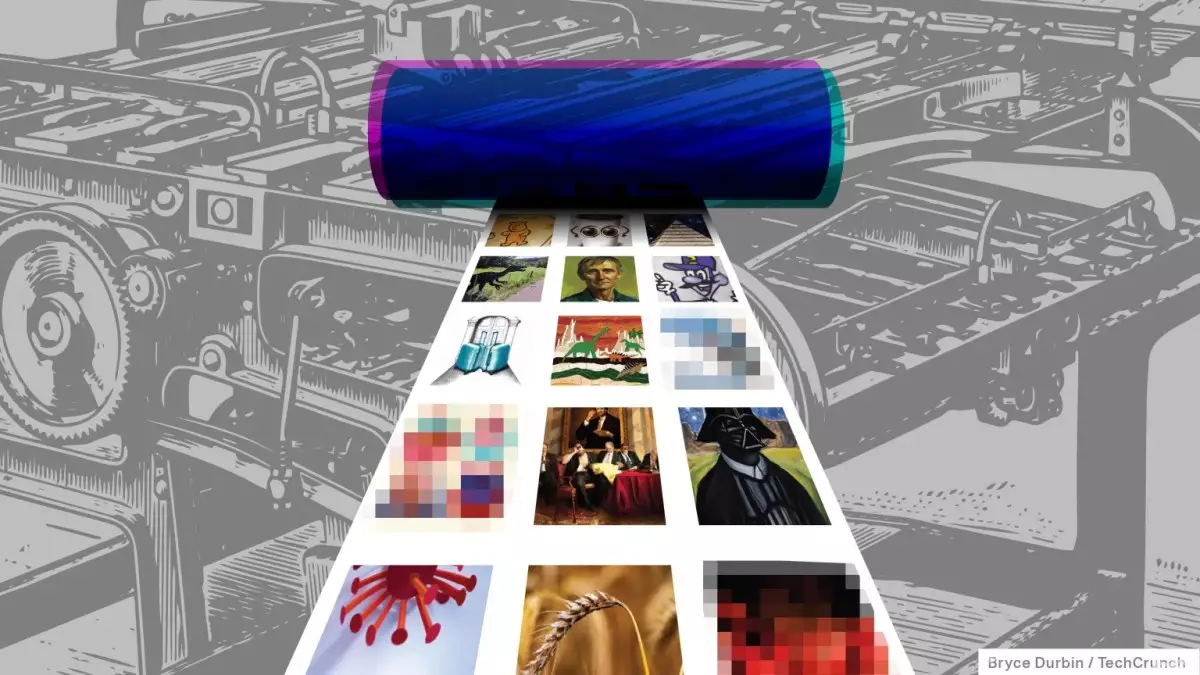In a rapidly evolving tech landscape characterized by both innovation and ethical challenges, Stability AI is making notable strides with the launch of its Stable Diffusion 3.5 series. This update comes at a time of scrutiny for the AI industry, particularly following previous controversies surrounding technical shortcomings and licensing complexities. The company seeks to redefine user engagement with image generation through enhanced performance and customization options.
The new series includes three distinct models, each designed for varying needs and capabilities. The flagship model, **Stable Diffusion 3.5 Large**, boasts a robust architecture featuring 8 billion parameters. This significant computational capacity allows for image generation at resolutions up to 1 megapixel. In layman’s terms, the higher the parameter count, the more sophisticated the model becomes, improving its ability to solve complex problems and generate high-quality images.
Next in line is the **Stable Diffusion 3.5 Large Turbo**, which serves as a distilled version of the Large model. This variant focuses on speed, generating images quicker, albeit with certain compromises on quality. Finally, the **Stable Diffusion 3.5 Medium** is tailored for edge devices like smartphones and laptops, enabling users to create images at substantially lower resolutions, between 0.25 to 2 megapixels. While the Large and Large Turbo models are currently accessible, the Medium variant is set to launch later in October.
A focal point in the development of the Stable Diffusion 3.5 series is the emphasis on generating diverse image outputs. Stability AI asserts that its models can produce images reflecting a variety of human characteristics without necessitating cumbersome prompts. This claim marks a step towards counteracting the bias often seen in generative AI outputs.
During model training, Stability AI adopts an innovative approach by tagging each image with multiple prompt variations, prioritizing shorter prompts for improved diversity. According to Hanno Basse, Stability’s Chief Technology Officer, this methodology aims to ensure that the models can represent a broader spectrum of human features and concepts with minimal user input. However, such past efforts have attracted criticism within the industry, highlighting the need for more thoughtful implementations to prevent issues akin to those experienced by competitors, such as Google.
Despite the advancements, the new series is not without potential pitfalls. The previous model, Stable Diffusion 3 Medium, faced backlash due to its tendency to produce bizarre artifacts and a lack of fidelity to user prompts. Stability has acknowledged the possibility of similar limitations in the new models but remains hopeful that the improvements will mitigate these concerns. The company assures users that they can expect greater variability in outputs, which could enrich the creative process, albeit at the cost of potential unpredictability in results.
Stability’s licensing terms continue to foster a complex landscape for users. The models in the Stable Diffusion 3.5 series are free for non-commercial applications, encouraging research and experimentation among smaller entities. However, for larger organizations generating over $1 million in revenue, commercial use necessitates an enterprise agreement. After facing community backlash over earlier restrictive terms, the company has shifted to allow for a more lenient commercial framework while still maintaining certain protective measures regarding the model’s outputs and the use of copyrighted data.
As with many AI-driven technologies, issues surrounding copyright remain a critical area of concern. Stability AI’s models draw on a vast array of publicly available web data, which may include copyrighted content. Although the company argues that the fair-use doctrine supports its data handling practices, this has not thwarted an increase in class-action lawsuits filed by data owners. Stability has placed the onus on its customers to navigate these legal complexities. They do, however, offer options for artists and content creators to request the removal of their work from the models’ training datasets.
Furthermore, as we edge closer to election periods, concerns about misinformation loom large. Stability AI has outlined measures to mitigate misuse of its technologies, although specifics remain undisclosed. Up until now, its policy primarily restricts the generation of explicitly misleading content, leaving more nuanced ethical implications largely unaddressed.
Stability AI’s introduction of its Stable Diffusion 3.5 models signals a promising enhancement in the capabilities of AI-generated imagery. Nevertheless, as we celebrate technological advances, it is crucial to engage in a continuous dialogue about ethical practices, copyright intricacies, and bias in AI. The potential for creativity in image generation is vast, but it requires a concerted effort from both developers and users to ensure these tools are wielded responsibly, promoting diversity and ethical standards in an ever-complex digital landscape.

